-
Tuesday, 19, Wednesday, 20, and Thursday, 21 October 2021 - 11am Sabatini Building, Auditorium
Notes for an Aesthetic History of Hope in the West
Seminar by José Emilio Burucúa
RegistrationThree twentieth-century masters supply the tools to explore the possibilities of writing an aesthetic history of certain general ideas: Italo Calvino, Hannah Arendt and Ernst Bloch. Through these three figures, Burucúa plunges into the search for a discourse which is able to shed light on the way in which artistic manifestations — visual, sound, linguistic — transmit, over time, the cornerstones determining diverse societies. With a view to addressing their symbolic-emotional values, he takes as a frame of reference Pathosformeln (the pathos formula), a term coined by Aby Warburg.
The seminar sets out from the idea of hope, as a field of experience, analysed via visual forms that artistic imagination associates with it. Through a study methodology based on classifying the signs put forward by Charles Pierce (icons, signs, symbols), and focusing on detecting metaphors and diagrams, Burucúa parses a repertoire that starts from ancient Mediterranean thought, arriving at the work of artists like Michelangelo, and his non finito sculptures, and concludes with the expectations convened by Malevich’s Suprematism and American abstract painting from the 1950s and 1960s.
-
Thursday, 21 October 2021 – 6pm Sabatini Building, Auditorium
The Transformation of Elephant Iconography in the West. Between Symbolism and Ecologism
Master lecture by José Emilio Burucúa
—Presentation and talk by Jesús Moreno Sanz, professor of Philosophy at UNED (Spain’s National University of Distance Education), researcher, editor and a specialist in the relationships between philosophy, science, poetry and mysticism.
Until the 18th century, European knowledge of the elephant originated from Asian traditions. Ancient notions of the religiousness of this animal, its magnanimity and unique intelligence — with its fullest synthesis transmitted during the Renaissance via Pliny the Elder’s Natural History — were at once powerful and unwavering. Subsequently, the explorations of Central and Southern Africa and south of the Sahara that led to the growing presence of Europeans and later Western nations’ colonisation and imperialism in this region of the world made new contact with pachyderms possible. The landscape darkened, however, with persecution and killing at the hands of hunters throughout Africa and the elephant lost its aura of benevolence and intelligence, acquiring something different forged from either a destructive ferocity or clumsiness verging on foolishness, but under the protection of the imagination that Africans expressed in their folklore. In the field of the visual arts, the image of the elephant piqued the interest of the most radical avant-garde movements in the 20th century, such as Dadaism, Surrealism and Pop Art, until it became a central theme in the relationship between humans and nature in the present day.

Rafael Pérez-Mínguez, Sin título (El elefante) (Untitled [The Elephant]), 1973
Held on 19 Oct 2021
The Museo Reina Sofía’s Juan Antonio Ramírez Chair invites art historian José Emilio Burucúa (Buenos Aires, 1946) to conduct a seminar devoted to the cultural history of hope and a master lecture on man-nature relationships by means of artistic representations of the elephant. The pre-eminent historian returns to the Museo after the postponement of the previous edition, which could only be carried out virtually due to the pandemic, resuming last year’s pending seminar and offering a new in-person lecture.
Burucúa is the author of an art history conceived as cultural history, in which encyclopaedic erudition combines with major transversal lines that endure over time, conjugating the influences of Walter Benjamin’s constellations with surviving images of Aby Warburg to become one of the most original voices of our time.
The Juan Antonio Ramírez Chair looks to reflect on the limits and potential of art history, a discipline being constantly reinvented methodologically, under continual transformation, anti-essentialist, and characterised by its permeability with other subjects. The core idea of the programme, across its ten-plus years of existence, is to disseminate and render an account of different intellectual positions. The Chair’s name pays homage to art historian Juan Antonio Ramírez (1948–2009), one of the founders of the MA in Contemporary Art History and Visual Culture (organised by the Autonomous University of Madrid, Complutense University of Madrid and Museo Reina Sofía), and a firm advocate of the singular and essential nature of art history in our contemporary society.
José Emilio Burucúa holds a degree in Art History and History of Science from the University of Buenos Aires, where he was also head lecturer in Modern History. He has been a visiting lecturer at prestigious centres such as École des Hautes Études en Sciences Sociales, Paris, and the Getty Research Institute in Los Angeles, among others. His works explore diverse themes such as art history in Historia, arte, cultura. De Aby Warburg a Carlo Ginzburg (Fondo de Económica, 2003), the history of laughter in Renaissance Europe in Corderos y elefantes. Nuevos aportes acerca del problema de la modernidad clásica (Miño y Dávila, 2001), chronicles of his travels in Diario de Nantes (Adriana Hidalgo Editora, 2019), and the history of perspective and the historical relationship between images and ideas. His latest work, Historia natural y mítica de los elefantes (Ampersand, 2019), written in a collaboration with Nicolás Kwiatkowski, explores the representation of the elephant in different spheres.
Organised by
Museo Reina Sofía
Educational program developed with the sponsorship of


![Barnett Newman, Profile of Light [Perfil de luz], 1967](https://recursos.museoreinasofia.es/styles/large_landscape/public/Actividades/2_20.png.webp)
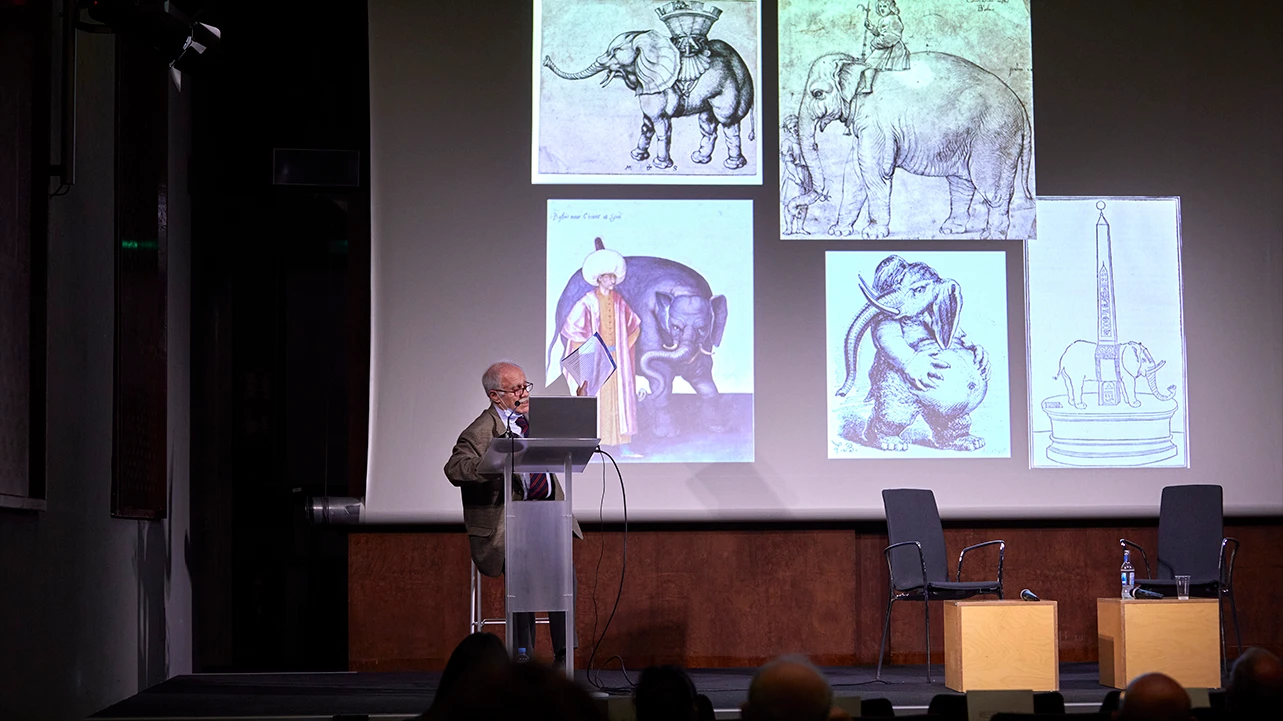
Más actividades

Difficulty. Forms and Political Effects of Deviation in Writing and Contemporary Art
23 February – 14 December 2026 – Check programme
Difficulty. Forms and Political Effects of Deviation in Writing and Contemporary Art is a study group aligned towards thinking about how certain contemporary artistic and cultural practices resist the referentiality that dominates the logics of production and the consumption of present-day art. At the centre of this proposal are the concepts of difficulty and deviation, under which it brings together any procedure capable of preventing artistic forms from being absorbed by a meaning that appears previous to and independent from its expression. By ensuring the perceptibility of their languages, difficulty invites us to think of meaning as the effect of a signifying tension; that is, as a productive and creative activity which, from the materiality of art objects, frees aesthetic experience from the representational mandate and those who participate in it from the passiveness associated with tasks of mimesis and decoding.
The economy of the referential norm translates the social logic of capitalism, where insidious forms of capturing subjectivity and meaning operate. In the early 1980s, and adopting a Marxist framework, poet Ron Silliman highlighted how this logic entailed separating language from any mark, gesture, script, form or syntax that might link it to the conditions of its production, rendering it fetichised (as if without a subject) and alienating its users in a use for which they are not responsible. This double dispossession encodes the political strategy of referential objectivity: with no subject and no trace of its own consistency, language is merely an object, that reality in which it disappears.
The political uses of referentiality, more sophisticated today than ever before, sustain the neoliberal-extractivist phase of capitalism that crosses through present-day societies politically, economically and aesthetically. Against them, fugitive artistic practices emerge which, drawing from Black and Queer studies and other subaltern critical positions, reject the objective limits of what exists, invent forms to name what lies outside what has already been named, and return to subjects the capacity to participate in processes of emission and interpretation.
Read from the standpoint of artistic work, the objective capture of referentiality may be called transparency. Viewed from a social contract that reproduces inequality in fixed identity positions, transparent in this objectivity are, precisely, the discourses that maintain the status quo of domination. Opposite the inferno of these discourses, this group aims to collectively explore, through deviant or fugitive works, the paradise of language that Monique Wittig encountered in the estranged practices of literature. For the political potency of difficulty — that is, its contribution to the utopia of a free language among equals — depends on making visible, first, its own deviations; from there, the norm that those deviations transgress; and finally, the narrowness of a norm which in no way exhausts the possibilities ofsaying, signifying, referring and producing a world.
From this denouncement of referential alienation, fetishisation and capture, Difficulty. Forms and Political Effects of Deviation in Writing and Contemporary Art turns its attention to the strategies of resistance deployed by contemporary artists and poets. Its interest is directed towards proposals as evidently difficult or evasive as those of Gertrude Stein, Lyn Hejinian, Theresa Hak Kyung Cha, Kameelah Janan Rasheed, Kathy Acker, María Salgado and Ricardo Carreira, and as seemingly simple as those of Fernanda Laguna, Felix Gonzalez Torres and Cecilia Vicuña, among other examples that can be added according to the desires and dynamics of the group.
The ten study group sessions, held between February and December, combine theoretical seminars, work with artworks from the Museo Reina Sofía’s Collections and exhibitions, reading workshops and public programs. All these formats serve as spaces of encounter to think commonly about certain problems of poetics — that is, certain political questions — of contemporary writing and art.
Difficulty. Forms and Political Effects of Deviation in Writing and Contemporary Art inaugurates the research line Goodbye, Representation, through which the Museo Reina Sofía’s Studies Directorship seeks to explore the emergence of contemporary artistic and cultural practices which move away from representation as a dominant aesthetic-political strategy and redirect their attention toward artistic languages that question the tendency to point, name and fix, advocating instead for fugitive aesthetics. Over its three-year duration, this research line materializes in study groups, seminars, screenings and other forms of public programming.

CLINIC 2628. A Community of Writing and Research in the Arts
February – October 2026
Clinic 2628 is a project which supports and brings together writings which stem from the intention to offer a space and sustainable time for research work in art and culture. Framed within an academic context which is increasingly less receptive to the forms in which thinking happens and is expressed, the aim is to rescue the academic from its neoliberal trappings and thus recover the alliance between precision and intuition, work and desire. A further goal is to return writing to a commons which makes this possible through the monitoring of processes and the collectivisation of ideas, stances, references and strategies.
The endeavour, rooted in a collaboration between the Museo Reina Sofía’s Studies Directorship and the Artea research group, via the i+D Experimenta project, is shaped by three annual editions conceived as spaces of experimentation, discussion and a demonstration of writings critical of what is put forward by today’s academia.
What forces, forms and processes are at play when writing about art and aesthetics? In academia, in museums and in other cultural institutions, the practice of writing is traversed by productivist logics which jeopardise rhythms of research and experimentation. The imposition of both scientism inherent in the structure of “the paper” and the quantifying of results which demand a criterion of quality and visibility sterilise and smoothen, from the outset, the coarseness that is particular to writing understood from the concrete part of language: phonic, graphic, syntactic and grammatical resistance connecting the language user to the community the language unites and activates. They also sterilise the roughness enmeshed in the same desire to write, the intuitive, clear and confusing pathways that once again connect the writer to those reading and writing, participating in a common good that is at once discovered and produced.
The progressive commercialisation of knowledge propelled by cognitive capitalism moves further away from the research and production of knowledge in artworks and artistic languages and practices. The work of curators and archive, criticism, performances and essays formerly saw a horizon of formal and emotional possibilities, of imagination that was much broader when not developed in circumstances of competition, indexing and impact. Today, would it be possible to regain, critically not nostalgically, these ways; namely, recovering by forms, and by written forms, the proximity between art thinking and its objects? How to write in another way, to another rhythm, with no more demands than those with which an artwork moves towards different ways of seeing, reading and being in the world?
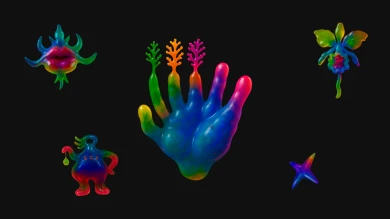
Cultural Work
Thursday, 12 February 2026 – 5:30pm
This series is organised by equipoMotor, a group of teenagers, young people and older people who have participated in the Museo Reina Sofía’s previous community education projects, and is structured around four themed blocks that pivot on the monstrous.
Session number two looks to approach film as a place from which cultural work is made visible and processes of production engage in dialogue with artistic creation. From this premise, the session focuses on exploring how audiovisual content is produced, assembled and distributed, from the hands that handle the images to the bodies that participate in its circulation. The aim is to reflect on the invisible effort, precarity and forms of collaboration that uphold cultural life, that transform the filmic experience into an act that recognises and cares for common work.
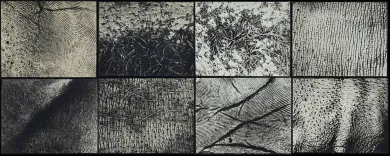
The (legal) person and the legal form. Chapter II
8, 12, 15 January, 2026 – 16:00 to 19:00
As part of the Studies Constellation, the Study Directoship’s annual fellowship, art historian and theorist Sven Lütticken leads the seminar The (Legal) Person and the Legal Form: Theoretical, Artistic, and Activist Commitments to foster dialogue and deepen the hypotheses and questions driving his research project.
This project, titled Unacting Personhood, Deforming Legal Abstraction, explores the dominance of real abstractions—such as exchange value and legal form—over our processes of subjectivation, and asks how artistic practices can open up alternative ways of representing or performing the subject and their legal condition in the contemporary world.
The seminar consists of eight sessions, divided into three chapters throughout the academic year. While conceived as non-public spaces for discussion and collective work, these sessions complement, nourish, and amplify the public program of the Studies Constellation.
In this second chapter of the seminar, the inquiry into the aesthetics and politics of legal form continues with three sessions that pick up the discussions held in Chapter I but propose new lines of flight. The first session focuses on international law via the writings of the British author China Miéville, which allows us to reconsider the notion of the legal form –following Evgeny Pashukanis— and, through it, a variety of (people’s) tribunals. While the crucial concept of the legal person –as the right-holder central to the form of law— was debated in Chapter I, the second session focuses on attempts to extend personhood not (just) to corporations, but rather to nonhuman animals or ecosystems. Finally, the third session poses the question: how can groups and networks use officially recognized organizational forms (such as the foundation or the cooperative) and/or use a collective persona (without necessarily a legal “infrastructure” to match) to act and represent themselves?

TEJA 2026. Open Call for Emergency Art Residencies
Proposal submission until 12 January, 2026
TEJA / Red de espacios culturales en apoyo a situaciones de emergencia [Network of Cultural Spaces in Support of Emergency Situations] has the mission to promote transnational cooperation by offering temporary art residencies to artists and cultural practitioners who find themselves in complex socio-political situations in their countries of origin. During their stay in Spain, residents receive accommodation, legal and psychological counseling, and access to a network of organizations and professionals with whom they can share, develop, and continue with their creative projects. The goal is to provide a safe and stimulating environment where artists can continue their work despite adverse circumstances and generate dialogue spaces that ensure freedom of expression through joint activities both in Spain and with international collaborators.
During 2026, TEJA hosts three new residencies, each lasting three months, dedicated to supporting artists and cultural practitioners residing in the West Bank and Jerusalem. In addition, in the second half of the year, TEJA hosts three additional residencies for Gazan artists, which are offered by invitation (as Spain is currently unable to facilitate evacuations from Gaza, these invitations are coordinated through France). These residencies aim to provide a stable, creative environment and foster artistic exchange in the face of ongoing adversities. Through this new program, TEJA reaffirms its commitment to amplifying Palestinian voices and empowering artists as they navigate these turbulent times.
The selection is carried out by the TEJA network in close collaboration with each hosting partner. This year the hosting partners are: La Escocesa (Barcelona), hablarenarte / Planta Alta (Madrid), Espositivo (Madrid), Institute for Postnatural Studies (Madrid), Casa Árabe (Córdoba). The selection prioritizes the artist’s personal and professional situation first, and then the alignment with the practices and themes of the hosting spaces. Proposal submission deadline is January 12th, 2026, 23:59 h.
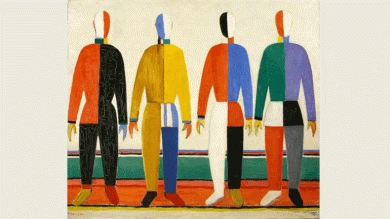
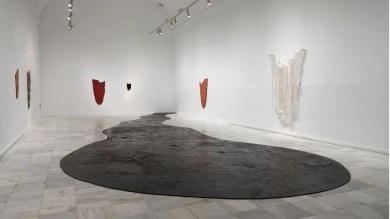
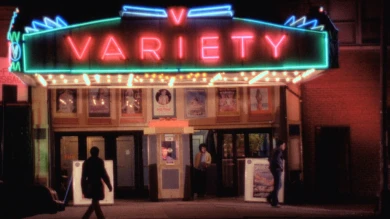

![Miguel Brieva, ilustración de la novela infantil Manuela y los Cakirukos (Reservoir Books, 2022) [izquierda] y Cibeles no conduzcas, 2023 [derecha]. Cortesía del artista](https://recursos.museoreinasofia.es/styles/small_landscape/public/Actividades/ecologias_del_deseo_utopico.jpg.webp)
![Ángel Alonso, Charbon [Carbón], 1964. Museo Reina Sofía](https://recursos.museoreinasofia.es/styles/small_landscape/public/Actividades/perspectivas_ecoambientales.jpg.webp)